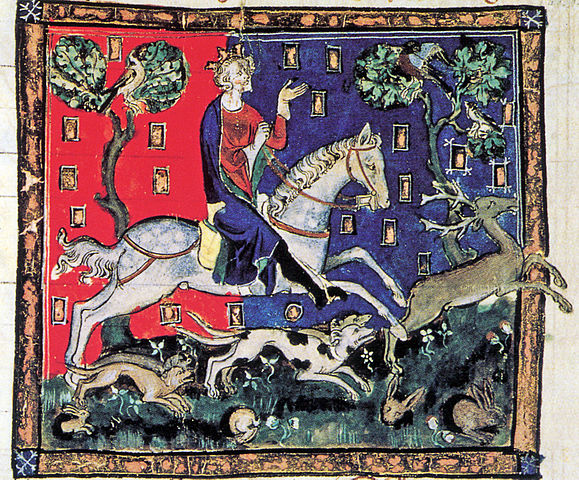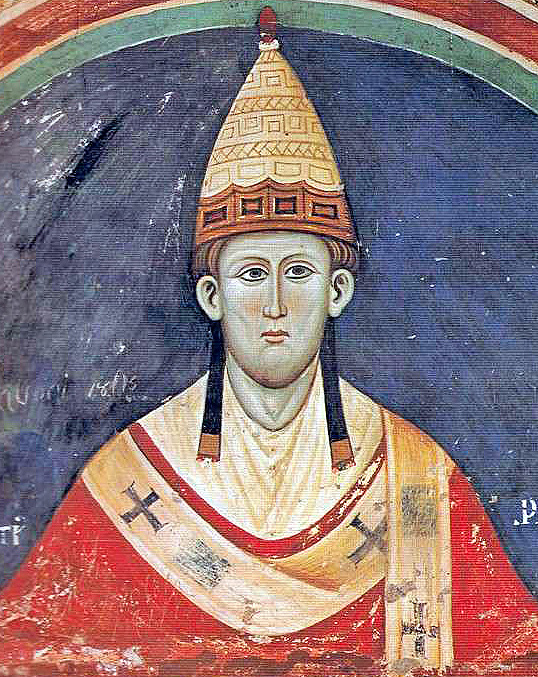
King John
Born: 24th December 1166, Beamont Palace, Oxford
Died: 19th October 1216, Newark Castle
Reigned: 6th April 1199 to 19th October 1216
Some basic facts first.
John was born on the 24th December 1166 in Beamont Palace, Oxford and was the son of King Henry II and Eleanor, Duchess of Aquitaine.
John married twice,
Isabella, Countess of Gloucester in 1189
Isabella, Countess of Angoulême in 1200.
He became King on the 6th April 1199 following the death of his brother, Richard I.
He died on the 19th October 1216 at the age of 49, having fathered five legitimate children, including the future King Henry III. There were also known to have been five illegitimate children born to various noblewomen during his first marriage.
|Although there is a lot that I could say about 'Bad' King John, I am going to limit myself to how his fate was intertwined with the development of the Charter, which subsequently became known as Magna Carta.
No king in English history has anything like the reputation of John. The mere fact that there is no King John II should tell you all there is to know about that. There have been attempts by a few historians to be more positive about him, but I tend to side with the medieval chronicler Matthew Paris that 'Foul as Hell is, Hell itself is defiled by the presence of John'.
When John came to the throne the Angevin Empire encompassed England, Wales, large swathes of the Eastern side of Ireland and a huge part of France, including Normandy, Brittany, Maine, Anjou, Poitou, Aquitaine, Auvergne and Gascony. By the time of his ignominious death in Newark Castle he had managed to lose all of France, bar Gascony and England itself had been invaded by Louis, son of the King of France.
Apart from the way he had treated almost everyone that he came into contact with, nothing illustrates his personality more than the story surrounding Lacock's own Ela, 3rd Countess of Salisbury, who was married to John's half-brother William Longespée. William was a valued soldier who had fought for both Richard and John. His name of Longespée simply meant 'Long Sword' to indicate his height and strength, which enabled him to wield a much larger sword than most. On the 27th July, 1214 he had been captured at the Battle of Bouvines in France, after a heavy defeat was inflicted on the English forces by the forces of King Philip of France. Longespée was held for ransom, but John was in no rush to pay. Stories began to emerge later that while William languished in a French prison, John had seduced Ela, probably at what we know today as the castle at Old Sarum, which was then Salisbury Castle. We will never know if this was actually true, but the French Court certainly believed it was the reason for William Longespée to suddenly change allegiance from John to support the invasion of England by Louis and his French forces.
There was a build up of discontent from the English Barons, who were being taxed by their King at hitherto unseen levels and with increasing frequency. This came to a head in the early summer of 1215 and saw the agreement of the 'Great Charter' on 15th June 1215, which only became generally known as Magna Carta long after John's death. It initially was simply about money and was seen by the barons as a device to reign in the excessive taxation demands of King John. Nothing more, nothing less. The general population were of no consideration to either side. It wasn't until John's son and successor, Henry III issued the final version of Magna Carta in 1225 (There were later reissues that were simply re-confirmations of the 1225 document), that it became about justice and liberty, in short the legend that we know today. So, John's involvement with Magna Carta is peripheral, although it is true to say that without 'Bad' King John there would be no Magna Carta as we know it.







